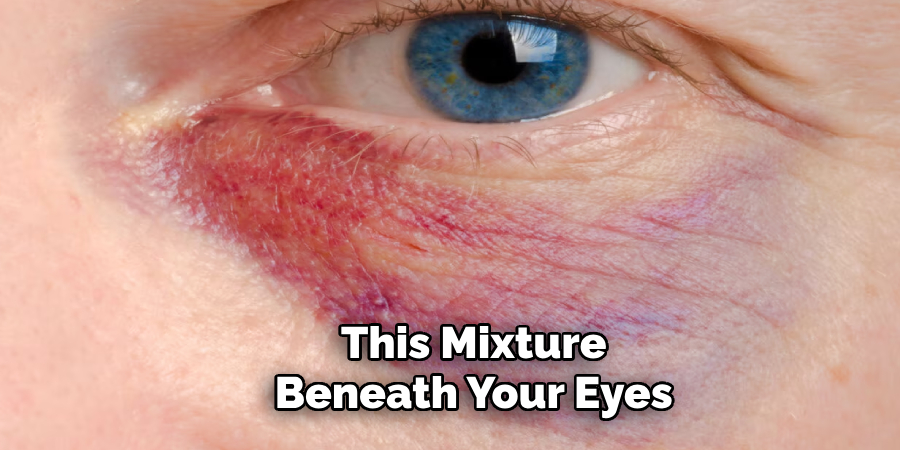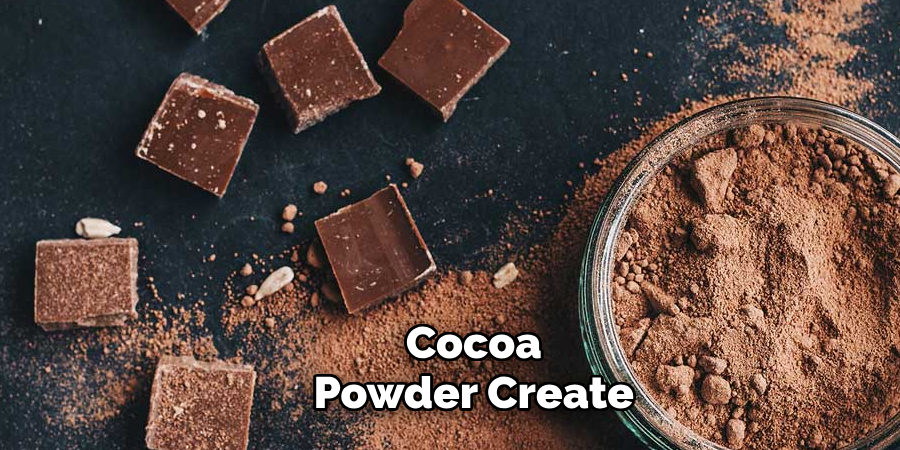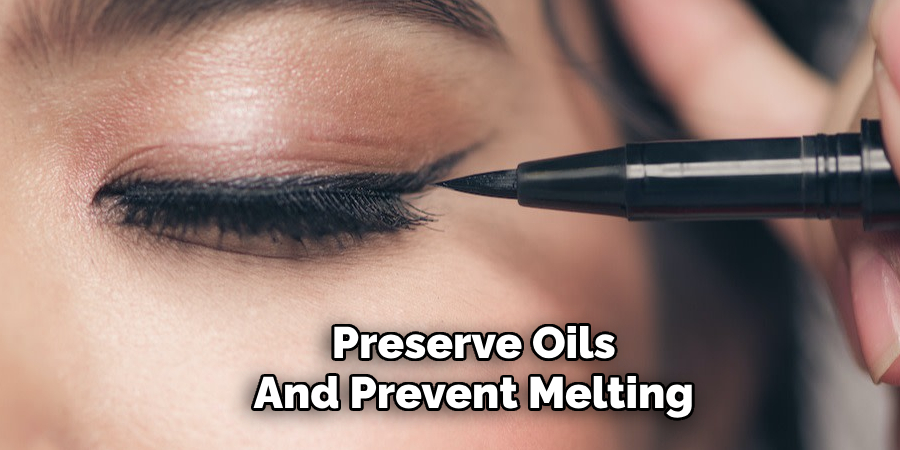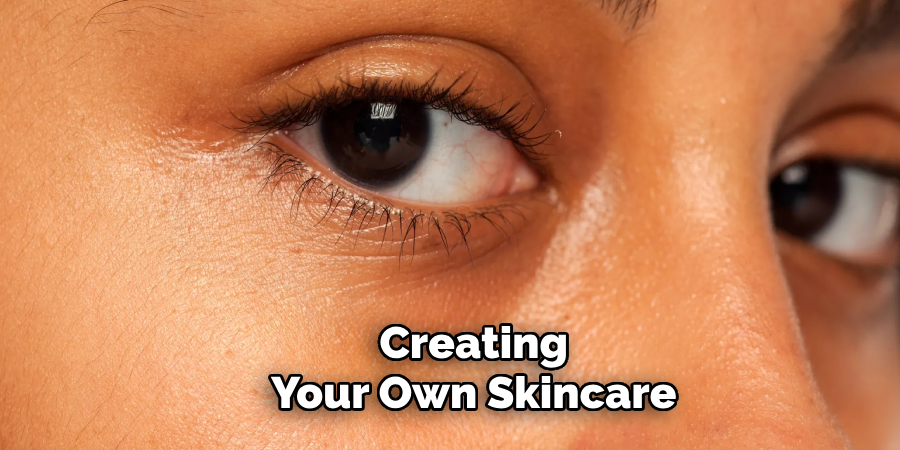Eye makeup for black eyes is a common accessory used by athletes, particularly in sports like football and baseball, to help reduce glare from the sun or bright stadium lights. Traditionally applied as dark grease or stickers beneath the eyes, its purpose is both functional and symbolic.
While eye black may not completely eliminate glare, it can improve visibility and focus during intense gameplay. Additionally, it has become a signature look for many athletes, combining practicality with a striking visual effect. This guide will walk you through simple methods of how to make eye black.

What is Eye Black and Why Do Athletes Use It?
Eye black is a substance or material commonly used by athletes, particularly in outdoor sports like football and baseball. It is typically applied as a dark stripe under the eyes, either as grease or adhesive stickers. The primary purpose of eye black is to reduce glare from sunlight or bright stadium lights, helping athletes maintain better visibility and focus during games.
Though its effectiveness in glare reduction has been debated, eye black remains a popular choice due to its potential benefits and psychological impact. Many athletes wear it as part of their game-day ritual, and it has grown into an iconic element of sports culture, adding a sense of intensity and identity to their performance appearance.
Common Uses beyond Sports
Beyond its traditional use in sports, eye black has found applications in various other contexts. For instance, it is often utilized in military operations to reduce glare and enhance visibility, particularly in environments with intense sunlight or reflective surfaces.
Additionally, eye black has become a symbol in entertainment and media, frequently appearing in movies, television shows, and cosplay to add a dramatic or intimidating touch to certain characters. Its association with focus and determination has also led to its occasional use in promotional or artistic settings, where it serves as a visual metaphor for resilience and intensity.

10 Methods How to Make Eye Black
1. Use Charcoal and Coconut Oil for a Natural Blend
One of the most popular homemade recipes for making eye black involves combining activated charcoal with coconut oil. Begin by placing a teaspoon of activated charcoal powder into a small bowl. This naturally black powder is safe for skin application and highly pigmented.
Add about half a teaspoon of coconut oil and stir until it forms a thick, paste-like consistency. Coconut oil not only gives it a spreadable texture but also provides some skin-conditioning benefits. Apply this mixture beneath your eyes in a stripe or oval using a cotton swab or your fingertip. This method is ideal for athletes seeking a non-toxic, skin-friendly option that won’t easily run with sweat.
2. Mix Beeswax and Pigment for a Solid Stick Form
If you prefer your eye black in a solid, balm-like stick form, a great method involves melting beeswax with a carrier oil and pigment. In a double boiler, melt one tablespoon of beeswax pellets with one tablespoon of olive oil or shea butter. Once melted, stir in half a teaspoon of cosmetic-grade black oxide or activated charcoal powder.
Pour the liquid into a clean, empty lip balm tube or a small tin and let it solidify. This version of eye black is mess-free and easy to apply directly to the skin, making it ideal for quick applications before games or performances.
3. Combine Cocoa Powder with Aloe Vera for a Gentler Option
For a more natural and gentle alternative—especially for sensitive skin—you can mix cocoa powder with pure aloe vera gel. Start with a tablespoon of unsweetened cocoa powder and add small amounts of aloe vera gel until you get a thick paste.
The cocoa powder creates a soft, brownish-black hue that still reduces glare while being mild on the skin. This version is perfect for children, casual games, or themed costumes. Additionally, the aloe gel provides a cooling, soothing effect that’s pleasant on hot days.

4. Use Burnt Cork for an Old-School Method
Historically, athletes and warriors have used burnt cork as a quick and easy form of eye black. Take a natural cork (not synthetic) and hold it over a flame—using caution—until the end chars and becomes blackened. Let it cool for a few seconds, then rub the blackened end directly under the eyes.
This method is quick and doesn’t require any mixing or tools. While it doesn’t have the staying power of oil-based blends, it’s a great throwback technique that works in a pinch and gives you that gritty, traditional feel.
5. Add Bentonite Clay for Staying Power and Oil Absorption
To increase the durability of your homemade eye black, add bentonite clay to your formula. Bentonite clay helps absorb sweat and oil, making the pigment less likely to run during physical activity.
Mix a teaspoon of activated charcoal with half a teaspoon of bentonite clay, and add just enough coconut or olive oil to form a smooth paste. This formula adheres better and has a matte finish, which is especially helpful for athletes who need their eye black to stay in place under hot lights or on the field.
6. Create a Theatrical Version with Face Paint and Setting Powder
If you’re using eye black for theatrical or costume purposes, a makeup-based approach may work better. Apply black cream face paint or eyeliner under the eyes and immediately set it with translucent setting powder or black eyeshadow to prevent smudging.
This technique creates a dramatic, defined stripe and is less likely to smear during performance. It’s particularly effective under stage lights or for photo shoots, where consistency and sharp lines are more important than durability in physical play.
7. Use Eyeliner for a Convenient On-the-Go Option
For an ultra-convenient, no-mix method, a simple black eyeliner pencil—especially a kohl or gel-based one—can serve as a great makeshift eye black. Just draw a thick line under each eye.
The eyeliner glides on smoothly and can be applied in seconds, making it an excellent emergency substitute. For improved durability, choose a waterproof formula. While not as long-lasting as wax-based blends in hot or sweaty conditions, it’s practical for brief use or indoor settings.
8. Infuse with Essential Oils for Skin Benefits and Aroma
To elevate your eye black recipe and add skin-nourishing properties, consider infusing your oil or wax base with a drop or two of essential oils.
Tea tree oil offers antimicrobial benefits, while lavender adds a calming scent and soothing effect. Just a drop or two is enough to provide added skin care without irritating the delicate under-eye area. Blend the essential oils with coconut oil or shea butter before adding your charcoal or pigment. This makes the application more pleasant and gives a personal touch to your formula.

9. Adjust Color Tone for Personal or Team Preference
While traditional eye black is deep black, some users may prefer slightly different tones for aesthetic reasons. You can adjust your homemade mixture by combining charcoal with other natural colorants.
For instance, adding cocoa powder to the charcoal lightens the tone slightly and warms it, while mixing in mica powder can add a subtle shimmer for theatrical flair. Experiment with different ratios to match your team’s branding, uniform color, or personal style, while still enjoying the glare-reducing benefits of a well-applied eye black.
10. Store and Preserve Your Homemade Eye Black Properly
Once you’ve created your ideal eye black recipe, storing it properly is key to maintaining its consistency and safety. For paste forms, use small glass jars or plastic containers with tight-fitting lids. Stick versions should be poured into empty lip balm tubes.
Store your products in a cool, dark place to preserve oils and prevent melting. If you’ve added any ingredients with a short shelf life (like aloe vera), it’s best to store the product in the refrigerator and use it within two weeks. Label the container with the date it was made to ensure freshness and avoid any skin reactions from spoiled ingredients.
Things to Consider When Making and Storing DIY Skincare Products
Ingredient Quality
Always choose high-quality, natural ingredients to ensure the effectiveness and safety of your product. Organic and unrefined oils, butters, and essential oils are ideal choices.
Sterilization
Ensure all containers and tools are properly cleaned and sterilized before use. This reduces the risk of contamination, which could spoil the product or cause skin irritation.
Allergy Testing
Conduct a patch test before widely using any product. New ingredients or combinations could cause unexpected reactions, so test on a small area of skin first.
Packaging
Choose storage containers that minimize exposure to air and light, as this can degrade the product over time. Consider using amber or dark-colored jars for light-sensitive ingredients.
Storage Temperature
Many homemade skincare products are sensitive to heat and should be kept in a cool, dark place. Refrigeration may be necessary for perishable additions like fresh aloe vera or fruit extracts.

Conclusion
Creating your own skincare products is a rewarding and sustainable way to take control of your beauty routine. By using high-quality, natural ingredients and storing them appropriately, you can ensure safe and effective formulations tailored to your needs.
Always prioritize cleanliness and care during preparation, and perform patch tests to avoid potential sensitivities. With a bit of effort and attention to detail, homemade skincare can become a fulfilling part of your self-care regimen. Thanks for reading our blog post on how to make eye black! We hope you found it helpful and informative.
About the Author
Jane Hubbard is a passionate beauty expert with a wealth of experience in makeup, hair, and overall beauty techniques. After years of working as a hairdresser specialist, she followed her entrepreneurial spirit and started her own consultancy business.
Jane has always been driven by her desire to help others feel confident in their own skin, and she does this by sharing her knowledge, experiences, and practical beauty tips. Through her consultancy, she empowers individuals to embrace their unique beauty, offering tailored guidance that boosts both self-esteem and personal style.
Professional Focus
- Specializes in makeup, hairstyling, and beauty consulting.
- Provides personalized beauty advice, tips, and techniques to help individuals feel confident in their appearance.
- Dedicated to staying up-to-date with the latest industry trends and developments.
- Passionate about creating a comfortable and empowering experience for every client.
Education History
- University of Craft and Design – Bachelor of Fine Arts (BFA) in Woodworking and Furniture Design
- Woodworking Apprenticeships – Extensive hands-on training with skilled craftsmen to refine carpentry and furniture making techniques
- Online Courses & Masterclasses – Continued education in advanced woodworking techniques, design principles, and specialized tools
Expertise:
- Makeup artistry, hairstyling, and beauty consulting.
- Personalized beauty techniques to enhance confidence and self-expression.
- Educating clients on how to maintain their beauty routines at home.
